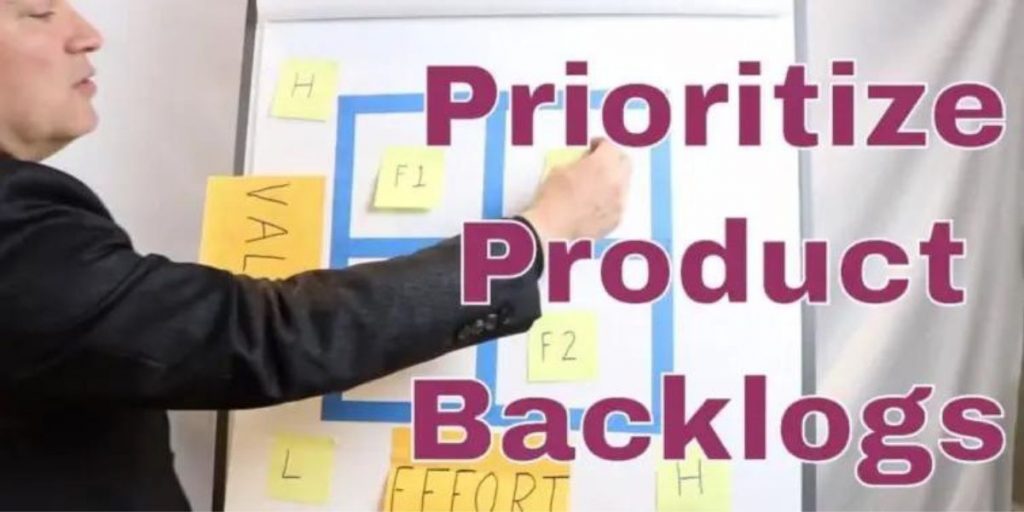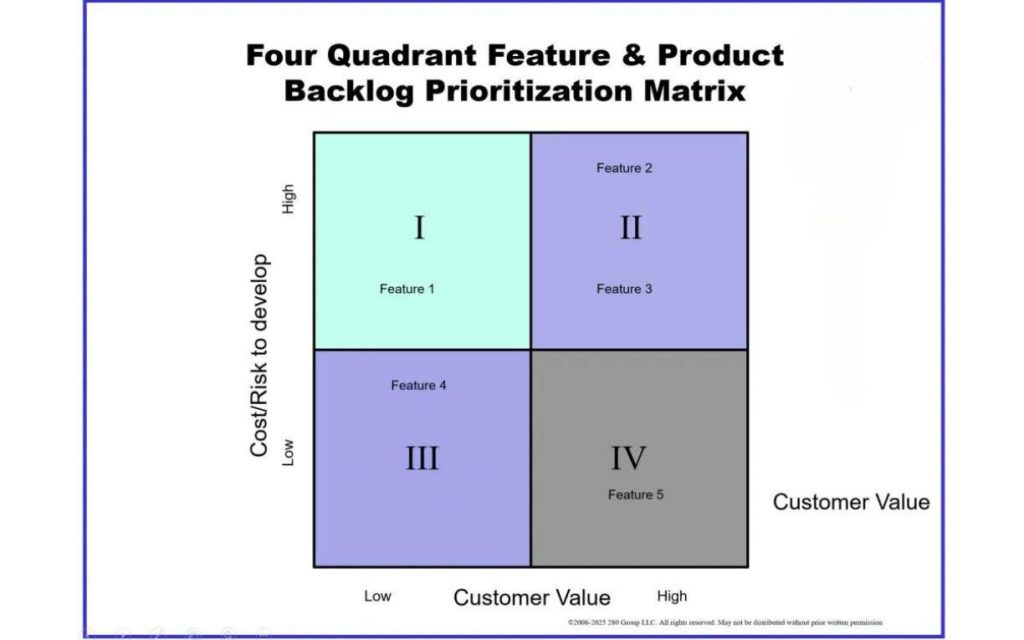
Product Backlog Prioritization: 3 Easy Steps
Using effective, time-tested techniques to prioritize product backlogs is an important step in getting a product to market rapidly that meets customer needs.
If you prioritize your backlog in a non-optimal manner then you may be wasting engineering resources by having them build features that aren’t the highest priority and don’t add the most value to your products.
This video tutorial and blog post teach you how to prioritize product backlogs if you are doing Agile development (Scrum, Kanban, Lean, XP) and/or prioritize features (if you are doing waterfall or stage-gate development.
The results will be that you are able to provide your team with a prioritized product backlogs that tells them exactly what the right development priorities are and what they should focus on first. This will help to ensure your customers are more delighted, prospects have a higher likelihood of buying and your company and product’s revenues and profitability will increase.
Here’s a summary of the steps to prioritize product backlogs or feature lists:
Step One – create a product backlog prioritization matrix with four quadrants
Step Two – label the x axis as customer value and the y axis and difficulty and resources needed to develop this feature. Label the axes with high at one end and low at the other
Step Three – Take all features from the quadrants and put them in a list in priority order:
- The quadrant that is low cost to develop and high value has the backlog items that go first
- Then comes the quadrant with high cost, high value
- Then take features from the low cost, low value quadrant
- And last but not lease, if there are any features in the low cost and low value quadrant that need to be matched for competitive parity or other reasons add these to the list
We hope this helps you prioritize product backlogs more effectively.
Here are some additional resources for you to learn about this and other prioritization methods.
Backlog Prioritization: Step One – create an agile prioritization matrix
The four quadrant matrix is a well-known technique for determining what your team’s development priorities should be. To create one you can use either a white board, flipchart or a PowerPoint templates (there is a PowerPoint templates in the PM resources library that you can download – it is in the templates folder).
The axes of the four quadrant prioritization matrix should be as follows:
- The X axis should be for value to the customer. This could be something that they immediately need or want to use. It could also be based on what the actual buyer (rather than user) wants.
- The Y axis should be difficulty or cost to develop. This can be a rough estimate from you engineering team.
- Both axes should be labeled as “Low” near the bottom left corner and high on the opposite end
Backlog Prioritization: Step Two – place each of the features in the agile matrix
Using any data you can as well as input from your engineering team about the difficulty of development, place ever features or product backlog item in the appropriate quadrant

Product backlog prioritization using the four quadrant method.
Backlog Prioritization: Step Three – Choose features to put in the backlog
To do this you’ll want to:
- Start with quadrant four features and add them to your backlog list. These are high-value, low effort features to add
- Then add quadrant two features
- Follow this with Quadrant III features
- Leave all quadrant one feature off the list because they are low value AND high cost to develop
You now have a list of priorities for your product backlog that has some good logic that you can easily defend and justify.
Additional best practices when you are prioritizing product backlog items:
- Get input from others
- Share with your engineering team the process you are using for prioritization – they will be more likely to buy in to the recommendations and will view you as the expert and voice of the customer
- Apply other prioritization techniques as a reality check. You can learn theses in the Optimal Product Management and Product Marketing™, Agile Excellence for Product Managers and Product Owners™ course and in the Feature Prioritization toolkit.
That’s it – how to prioritize product backlogs in three easy steps!


